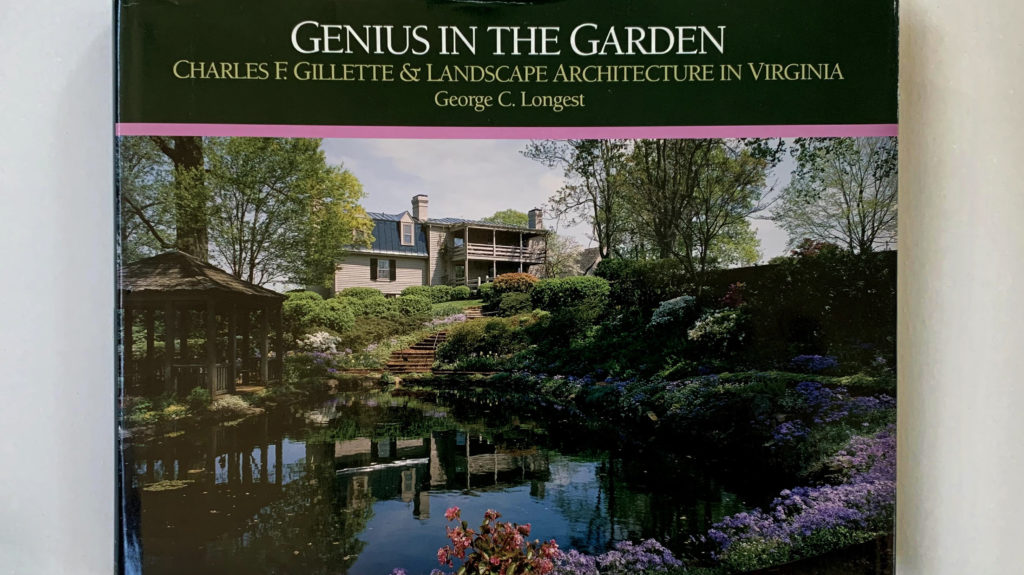George C. Longest
1992
Virginia State Library and Archives
218 pages
Decades after his death, owning a garden designed by Richmond landscape architect Charles Gillette (1886–1969) is still a marker of status and taste. “Gillette Gardens,” as they are known, pepper the city’s wealthy West End and hide behind some of the architectural treasures of Monument Avenue. Although best known for these residential designs, Gillette created major landscape plans for universities, corporations and institutions, and helped to shape the profession of landscape architecture in Virginia in the process. George C. Longest, a professor of English at Virginia Commonwealth University, skillfully chronicles Gillette’s life and work in his book “Genius in the Garden.”
The book is a wonderful reference volume on Gillette, with a comprehensive index of his oeuvre, 786 recorded projects in all, and tables breaking down his commissions by location and type. With nearly 500 projects in Virginia, the scale of Gillette’s impact on the state is made clear. Extended sections describe some of Gillette’s most famous projects including the grounds of the Virginia House, Agecroft Hall, the College of William and Mary, the University of Richmond and the headquarters of Ethyl corporation. The book also reproduces two short essays by Gillette offering an introduction to Gillette’s philosophy of landscape design, as well as more pragmatic advice on planting selections and arrangements.
“Genius in the Garden” is handsomely laid out in horizontal format with large pictures, many in full color, displaying the vivacity of Gillette’s creations. But the book is more than just a monograph; Longest creates a compelling narrative, following Gillette from his birth and boyhood in Wisconsin through his apprenticeship with eminent Massachusetts landscape architect Warren Manning (a disciple of Frederick Law Olmsted) and to the establishment and operation of his own practice in Richmond. Gillette’s many professional triumphs were not always accompanied by financial success, as his vision often took precedence over his budget.
Longest is an adept writer and his descriptions of Gillette’s landscapes are every bit as evocative as the illustrations. Through careful research, he manages to bring to life even those Gillette Gardens that have been lost to time. “Genius in the Garden” is a worthy testament to Gillette and his creations.
DOK


1 Comment
Let’s not forget the astonishing resources in the Charles Gillette papers at the Library of Virginia. There are drawings of hundreds of Gillette commissions – built and unbuilt – on file along with many files of correspondence between Gillette and his clients. Since the relationship between the structure and its surrounding garden was critical to Gillette in planning his designs, he often requested a copy of the architectural drawings of the house or office and these are sometimes the only record of that building. The labor-intensive nature of Gillette’s gardens means that those that survive are often very different from what he planned, but the hardscape of sites like the garden outside Keller Hall at UR and the garden at what is now Stony Point school survive to bear witness to Gillette’s craft, and his papers at the LVA document this element of Virginia history.
Write a Comment